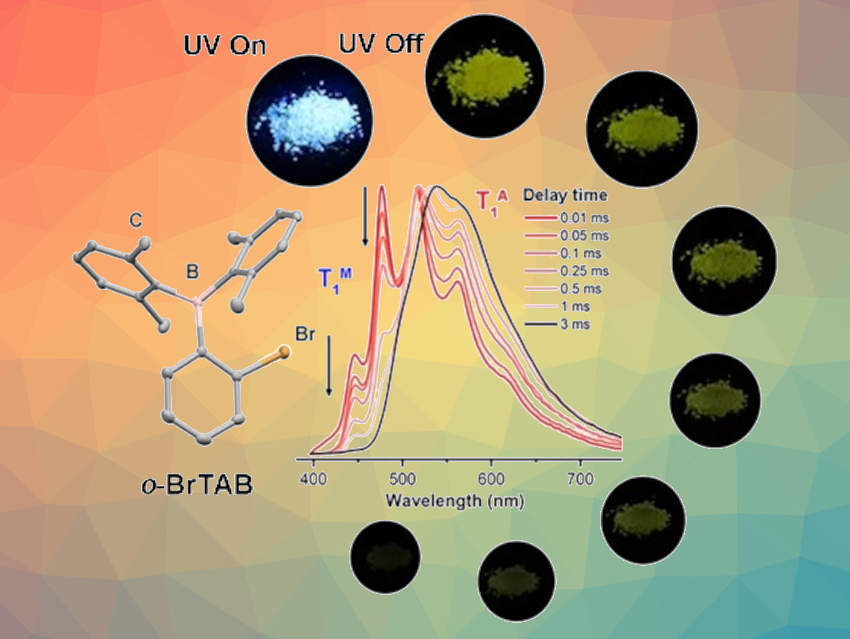Purely organic phosphors can be useful, e.g., in optoelectronic devices, bioimaging, or sensing. However, they often suffer from inefficient intersystem crossing (ISC) and environmental quenchers such as O2, which negatively affect their optical properties. There are organic phosphors that emit only single-component phosphorescence, but also some with dual phosphorescence emission, which results from two different triplet states. Although dual room-temperature phosphorescence (DRTP) has been reported sporadically, there is a lack of detailed studies on the associated mechanisms.
Christel M. Marian, University of Düsseldorf, Germany, Todd B. Marder, University of Würzburg, Germany, and colleagues have prepared three different isomers of a bromotriarylborane, i.e., o-, m-, and p-bromophenyl)-bis(2,6-dimethylphenyl)boranes (o-, m-, and p-BrTAB). o-BrTAB was synthesized via a reaction of the Grignard reagent (2,6-Me2-C6H3)MgBr with o-Br-C6H4BF3K, and m– and p-BrTAB were prepared by a reaction of bis(2,6-dimethylphenyl)fluoroborane with the respective aryllithium species generated from m– or p-dibromobenzene and n-BuLi.
Among the three synthesized compounds, only o-BrTAB shows DRTP, with faster, higher-energy phosphorescence in the range of 430–490 nm with a short lifetime of 0.8 ms and a long-lived, lower-energy phosphorescence emission in the range of 490–700 nm with a lifetime of up to 234 ms attributed to an aggregate in the crystalline material. Based on theoretical calculations and a crystal structure analysis, the researchers attribute the short-lifetime component to the T1M state of the monomer, and the long-lived phosphorescence emission to the T1A state of an aggregate. They propose that multiple intermolecular interactions exist in crystalline o-BrTAB, inhibiting nonradiative decay and stabilizing the triplet states efficiently.
The study provides insight into the design of purely organic phosphors which exhibit dual phosphorescence in the crystalline state, as well as a possible mechanism for this behavior.
- Aggregation‐Induced Dual Phosphorescence from (o‐Bromophenyl)‐Bis(2,6‐Dimethylphenyl)Borane at Room Temperature,
Zhu Wu, Fabian Dinkelbach, Florian Kerner, Alexandra Friedrich, Lei Ji, Vladimir Stepanenko, Frank Würthner, Christel M. Marian, Todd B. Marder,
Chem. Eur. J. 2022.
https://doi.org/10.1002/chem.202200525




